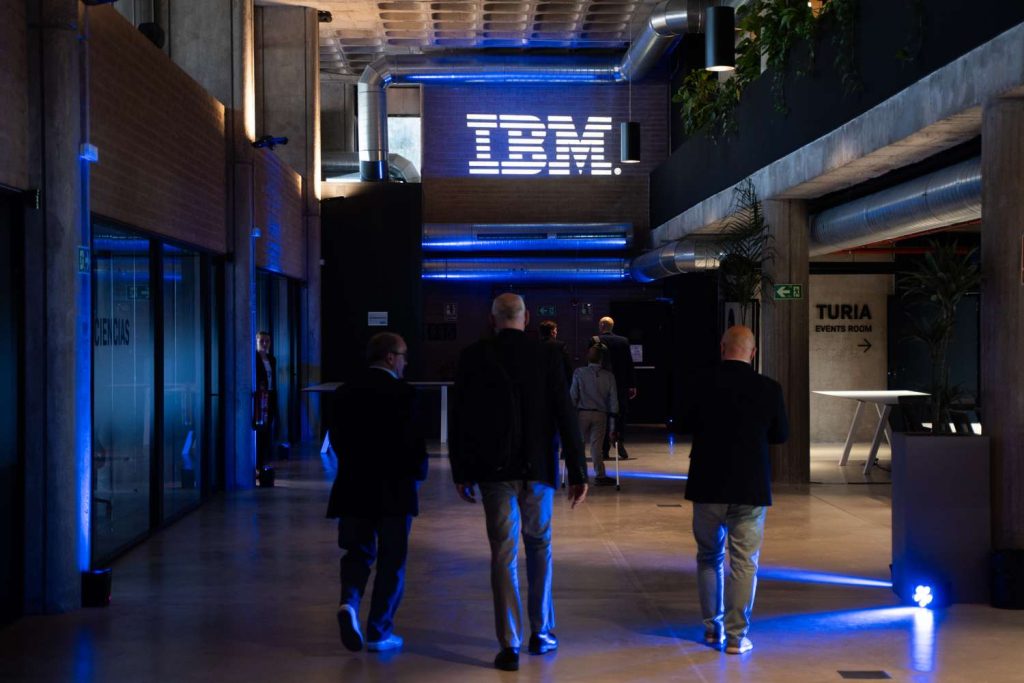More than a century after its first punch‐card tabulators helped the U.S. Census count a growing nation, International Business Machines Corp. (IBM) is again surprising skeptics. Once written off as a lumbering mainframe relic, “Big Blue” has again captured Wall Street’s attention with a fresh strategy that combines hybrid cloud, artificial intelligence, and an ambitious, long-term play in quantum computing, which has given it a head start in one of the most significant mid-2020s tech trends.
Revenues are growing again, its stock reached an all-time high in February 2025, and CEO Arvind Krishna is credibly pitching IBM as the platform provider for the next era of enterprise tech.
How did a 114-year-old company reverse decades of stagnation? The answer lies in an unbroken habit of reinvention—from punch-cards to quantum bits—that is once more reshaping IBM’s future.
Key Takeaways
IBM’s latest turnaround rests on a focused, three-pillar playbook: hybrid cloud, enterprise AI, and the promise of fault-tolerant quantum computing.
From Punch Cards to Mainframes to PCs—and Nearly to Oblivion
IBM’s story begins with Herman Hollerith’s electromechanical tabulators in the 1890s and the 1911 merger that created the Computing-Tabulating-Recording Company, renamed IBM in 1924. Punched cards became the data medium of the 20th century, and by the 1960s, IBM’s System/360 mainframe made “Big Blue” synonymous with enterprise computing.
That glory, though, faded fast. By 1993, increased competition, scrappy Silicon Valley startups, and collapsing hardware margins left IBM with billions in losses and a breakup plan on the boardroom table as its personal computer and server businesses lagged. Incoming CEO Lou Gerstner stopped the split, slashed costs, and pivoted the company toward integrated services—a first major rescue that restored profitability by the late 1990s.
However, growth again stalled, and IBM pivoted in the 2010s as cloud computing and software-as-a-service (SaaS) technologies siphoned off workloads. The spinoff of the managed-infrastructure unit Kyndryl in 2021 rid itself of low-growth baggage, setting the stage for IBM’s latest focus on generative AI and quantum computing.
Hulton Archive / Getty Images)
Krishna’s Playbook
Krishna, a 30+ year IBM veteran and the architect of the $34 billion Red Hat deal closed in 2019, took the helm in April 2020, determined to “own the control plane” of enterprise IT. Since then, IBM has focused on the following:
Hybrid cloud: Red Hat’s OpenShift anchors IBM’s platform-agnostic stack, allowing clients to run workloads across clouds and hardware without lock-in. Hybrid-cloud revenue rose 12% in the first quarter of 2025 and now accounts for more than half of software sales.
AI everywhere: The WatsonX portfolio—foundation AI models, big data repositories, and custom agents and governance tools—targets the “white-glove” enterprise segment that’s often an afterthought for consumer-facing AI platforms. A recent IBM survey of executives found they expect an eight-fold jump in AI-enabled workflows by 2027.
Strategic acquisitions: Finalized in February 2025, the $6.4 billion acquisition of HashiCorp adds Terraform, Vault, and other DevOps staples, reinforcing IBM’s multicloud automation capabilities and providing Red Hat with fresh cross-sell opportunities.
Quantum computing: IBM’s third pillar may prove the most transformative—it’s almost certainly been so for its stock price. In 2025, the company unveiled plans to build “Starling,” a 200-logical-qubit, fault-tolerant quantum computer, by 2029 at its historic upstate New York campus. Starling would support deep, error-corrected circuits—opening the door to breakthroughs in materials science, logistics, and cryptography. IBM’s roadmap calls for progressively larger systems.
The Bottom Line
IBM’s comeback reflects the company’s century-old strength: reinventing itself around emerging computing paradigms. After previously mastering mainframes, personal computers, and client-server systems, IBM has again found its footing.
A shift several years ago to hybrid-cloud gave it present-day relevance, enterprise AI restored growth projections, and a sizable quantum bet could secure leadership well into the 2030s and beyond.

